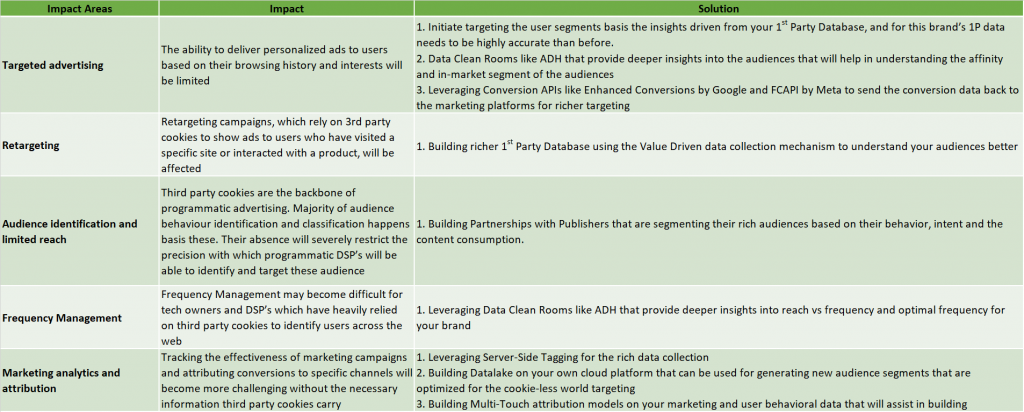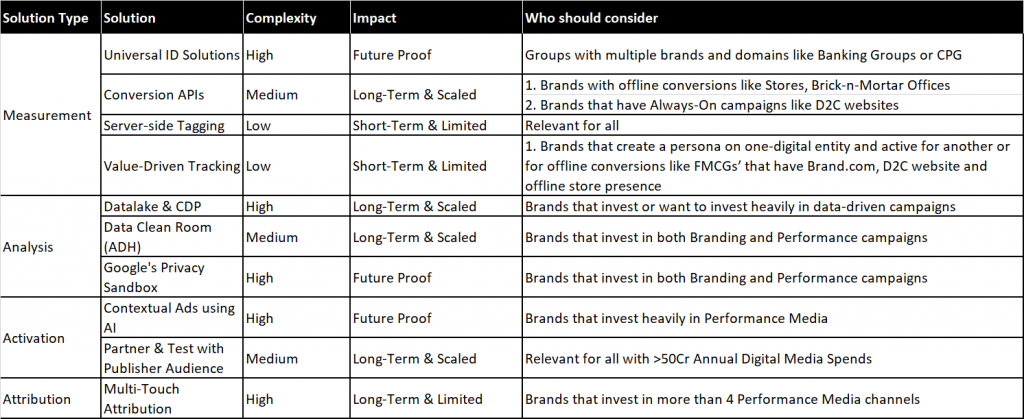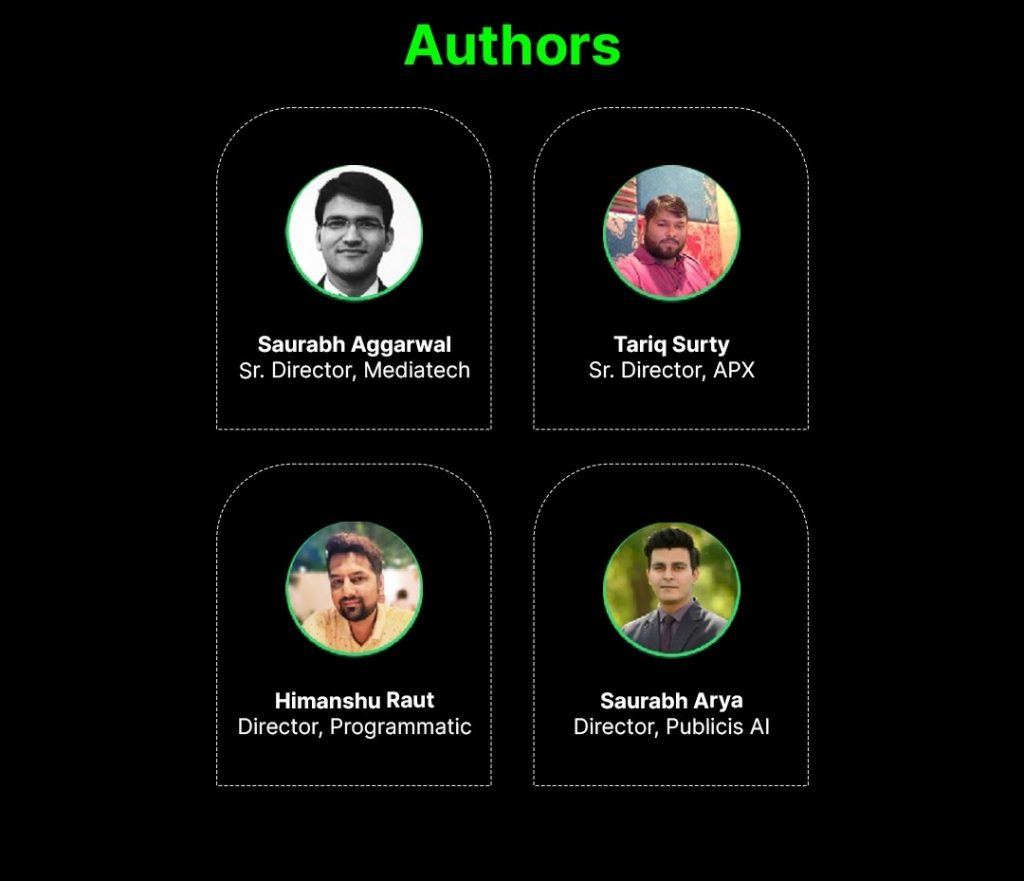

Let us start by aligning to a simple definition of what a 3rd party cookie is – A small piece of data that a website other than the one you’re currently visiting, stores on your computer to track your online behaviour and preferences.
| 1st Party | 3rd Party | |
| Origin | Created by the website you are currently visiting (e.g., example.com) | Created by a different website/domain than the one you are visiting |
| Purpose | Personalized user experience by enabling custom web functionality | Tracks user behaviour across multiple websites, mainly for advertising and analytics purposes. |
| Privacy | Considered safer as the data stored is of the website that created them | Considered a privacy concern as they store user data which is used eventually for personalized targeting |
Simplifying the 3rd Party Cookie Deprecation Update
Third-party cookie deprecation refers to the gradual discontinuation of third-party cookies by web browsers. Here is a quick history lesson on it –


Ask us for our Proprietary audit which will help you decide the solution best suited for your need.
Manage and deploy tracking tags and analytics scripts on the server level, rather than on the client’s browser (client-side). This approach involves collecting user data, processing it on the server, and then forwarding it to analytics and marketing platforms such as Google Analytics and ad networks.
2. Leveraging Conversion APIs
Conversion APIs allow you to send information about user actions directly from your server to a third-party platform like an advertising network or analytics tool
a. Not affected by ad blockers or privacy settings.
b. Works even if user data is not available in the browser.
c. Can track a wider range of events, including offline conversions.
3. Building Datalake and CDP
Consumer Data Platforms help cultivate your first party data and have a 360 view of your customer, thus facilitating data-driven decision-making, enhance targeting capabilities, increase ROI, and ensure compliance with data privacy regulations.
4. Partnerships
In the era of 3rd-party cookie deprecation, establishing enduring partnerships with publishers is pivotal for advertisers. By collaborating closely with publishers, advertisers gain access to invaluable first-party data, enabling them to maintain precise targeting capabilities while respecting user privacy. Publishers possess deep insights into their audience demographics and behaviors, accumulated through direct interactions on their platforms. Leveraging this first-party data empowers advertisers to craft highly targeted campaigns that resonate with specific audience segments. These symbiotic partnerships not only ensure continuity in targeting efforts but also foster trust and transparency within the advertising ecosystem.
5. Multi-Touch Attribution
Multi-Touch Attribution (MTA) assigns weights to different touchpoints, aiding in
understanding the impact of each channel on conversions. Real-time data access at an individual user-level enables marketers to optimize channels granularly and comprehend their audiences.
6. Customer Regression Based Attribution Model (CRBAM)
It is a Regression-Based Attribution focusing solely on digital media effectiveness. This enables micro-level analysis at both the channel and tactic levels, providing insights into the impact of various campaigns.
7. Google’s Privacy Sandbox
It is a collection of privacy-preserving technologies and proposals designed to enhance user privacy on the web while still allowing advertisers and publishers to deliver targeted advertising and measure ad performance. It basically consists of the below modules:
8. Third Party Universal ID Solutions
9. Contextual Advertising
AI-powered NLP and computer vision can be used to analyze website content, identify the main topics, and determine the most relevant ads for that context. For example, if an AI system detects that a webpage is about travel, it might suggest ads for hotels, flights, or travel insurance.
